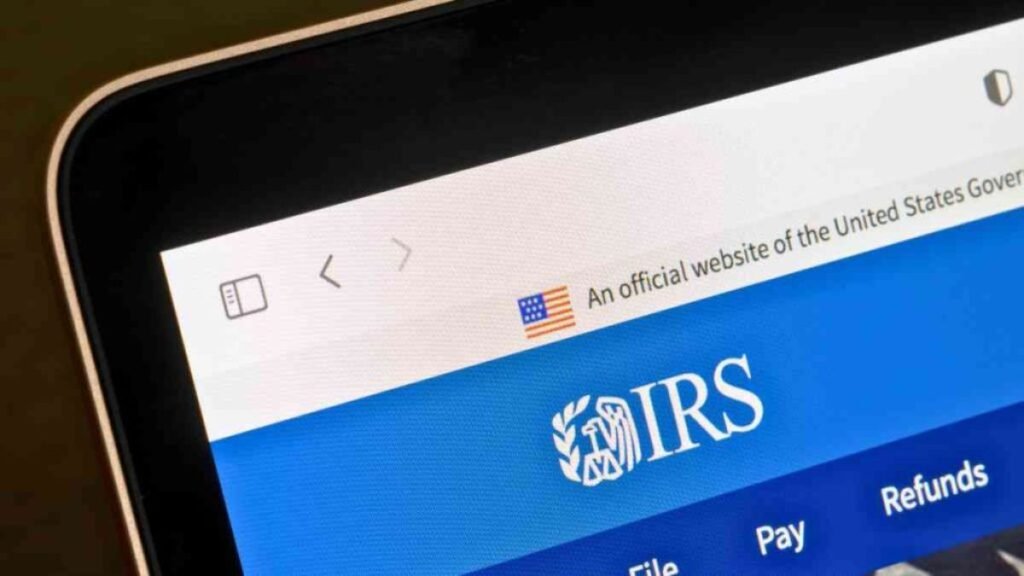Filing your taxes might sound like a stressful chore, but it doesn’t have to be. With the IRS introducing the new Direct File system, the process has become much easier and faster—especially for residents in states like California. If you’re looking for a simpler way to handle your taxes, this guide will walk you through what IRS Direct File is, why it’s beneficial, who can use it, and how long it typically takes to get your refund.
What is IRS Direct File?
The IRS Direct File is a newly launched online tool created by the Internal Revenue Service to help eligible taxpayers file their federal tax returns directly through the IRS website. Think of it as a streamlined, government-run alternative to commercial tax software like TurboTax or H&R Block.
Instead of relying on third-party platforms, taxpayers now have access to a secure, no-cost option directly from the source. The idea behind this system is to make tax filing more straightforward, reduce errors, and speed up the refund process. And the best part? It’s completely free for those who qualify.
Why Did the IRS Launch Direct File?
Each year, millions of Americans struggle with tax filing due to complex forms, software costs, and confusion over rules. The IRS saw the need to offer a free, easy-to-use system for those with simpler tax situations. This tool is especially beneficial for individuals who have W-2 income, take standard deductions, and don’t own a business or have complex investment portfolios.
By cutting out the middleman, the IRS aims to reduce mistakes, ensure faster processing, and give taxpayers peace of mind.
Who Can Use IRS Direct File?

IRS Direct File isn’t available to everyone just yet—it’s being rolled out gradually in select states, including California. You may be eligible to use Direct File if:
- You reside in a participating state such as California
- You earned income from W-2 jobs (basic employment income)
- You are taking the standard deduction (not itemizing deductions)
- You do not have business income or investment income
- You don’t claim complex tax credits
If your tax situation is relatively simple and you fall within the categories above, Direct File could be perfect for you.
Before you get started, make sure to check the IRS Direct File eligibility page on the official IRS website. There, you can find state-specific guidelines and eligibility criteria.
How Does Direct File Work?
Here’s how the process usually works:
- Visit the IRS Direct File portal during the filing season.
- Log in or create an IRS account to securely access your information.
- Fill in your tax information, such as your W-2 income, filing status, and dependent details.
- Review the system’s automatic calculations of your taxable income, deductions, and credits.
- Submit your return electronically directly to the IRS.
No need to download any software, pay third-party providers, or worry about manually mailing documents.
What are the Benefits of Using Direct File?
If you qualify to use this system, here are some major advantages:
- Faster filing: Since you’re submitting directly to the IRS, there’s no delay between a third party and the government.
- Reduced errors: The system helps flag common mistakes before submission.
- Earlier refunds: Electronic filing with Direct File typically means you’ll get your refund in about three weeks or less.
- No hidden costs: Unlike some commercial software that charges for “premium” features, Direct File is 100% free.
- Ease of use: The platform is designed to be user-friendly even for first-time filers.
Real-Life Example: Filing in California
Let’s say John is a full-time teacher in California who earns a salary from his W-2 job, doesn’t own a home, and is taking the standard deduction. Instead of paying for a commercial filing tool, he logs into the IRS Direct File system, fills in his income and personal details, and submits everything online. Within two weeks, he receives his federal tax refund directly to his bank account. No fees. No hassle.
How Long Does It Take to Get Your Refund?
The IRS typically processes electronic tax returns faster than paper returns. Here’s what you can expect:
- Electronic filers using Direct File: Refunds generally processed within 21 days.
- Paper filers: It may take 6 weeks or longer.
- Returns requiring further review: If the IRS needs to verify additional details, it could take more time regardless of how you file.
For example, if there’s a mismatch between your W-2 details and what your employer submitted, or if you changed bank accounts and there was a direct deposit issue, the refund might be delayed.
How to Track Your Tax Refund

The IRS provides an online tool called “Where’s My Refund?” which gives real-time updates on your refund status. After filing, simply enter:
- Your Social Security number
- Your filing status (e.g., single, married)
- The exact refund amount shown on your return
Within 24 hours of submitting an electronic return, the system will begin showing updates. For paper returns, it might take a few weeks to show any activity.
Tips for a Smooth Filing Experience
- Keep your documents ready: Before logging in, gather your W-2, Social Security number, and bank account info.
- Use a secure internet connection: Always file taxes from a private and secure network.
- Double-check your details: Errors in names, Social Security numbers, or banking info can delay your refund.
- Opt for direct deposit: It’s the fastest way to get your money.
Final Thoughts
The IRS Direct File system is a welcome innovation that simplifies federal tax filing for many Americans. If you’re a California resident with a simple tax profile, this tool can save you time, money, and stress. You’ll avoid the complications that come with third-party services, and you’ll likely receive your refund faster.
Don’t wait until the last minute. Start gathering your documents early, verify your eligibility, and take advantage of Direct File to make tax season a little less taxing.
FAQs
Q1. What is the new IRS tax filing update for California?
A: The IRS has introduced a major update that allows eligible California residents to use the new Direct File system, simplifying how state and federal taxes are filed online at no cost.
Q2. Who is eligible to use the IRS Direct File system in California?
A: Eligibility is generally limited to individuals with simple tax situations—such as W-2 income, standard deductions, and no self-employment or itemized deductions. Specific income and filing criteria apply.
Q3. When will this new tax filing system be available?
A: The Direct File system is now available for the current tax season. Taxpayers should check the official IRS website for exact dates and access instructions.
Q4. Is Direct File available in other states or only in California?
A: California is one of several pilot states where the IRS has rolled out this system. However, the program may expand based on the success of the pilot.
Q5. What are the benefits of using the Direct File system?
A: The system offers a faster, easier, and free way to file federal taxes, with fewer chances for errors and a quicker refund process.








